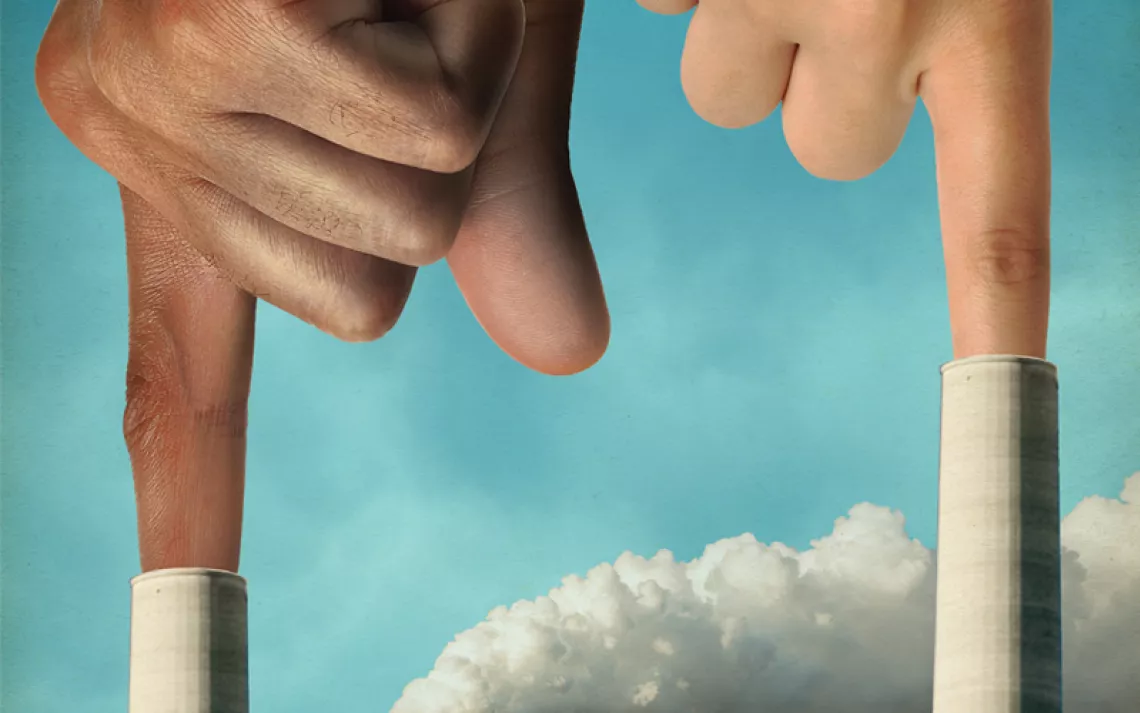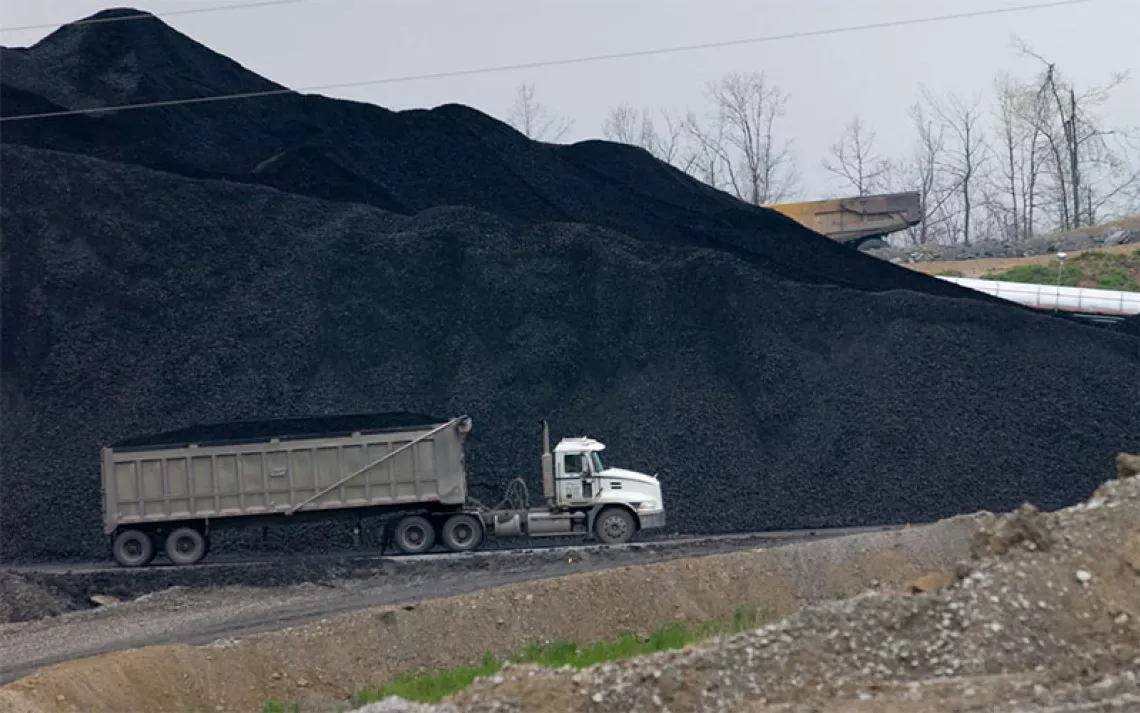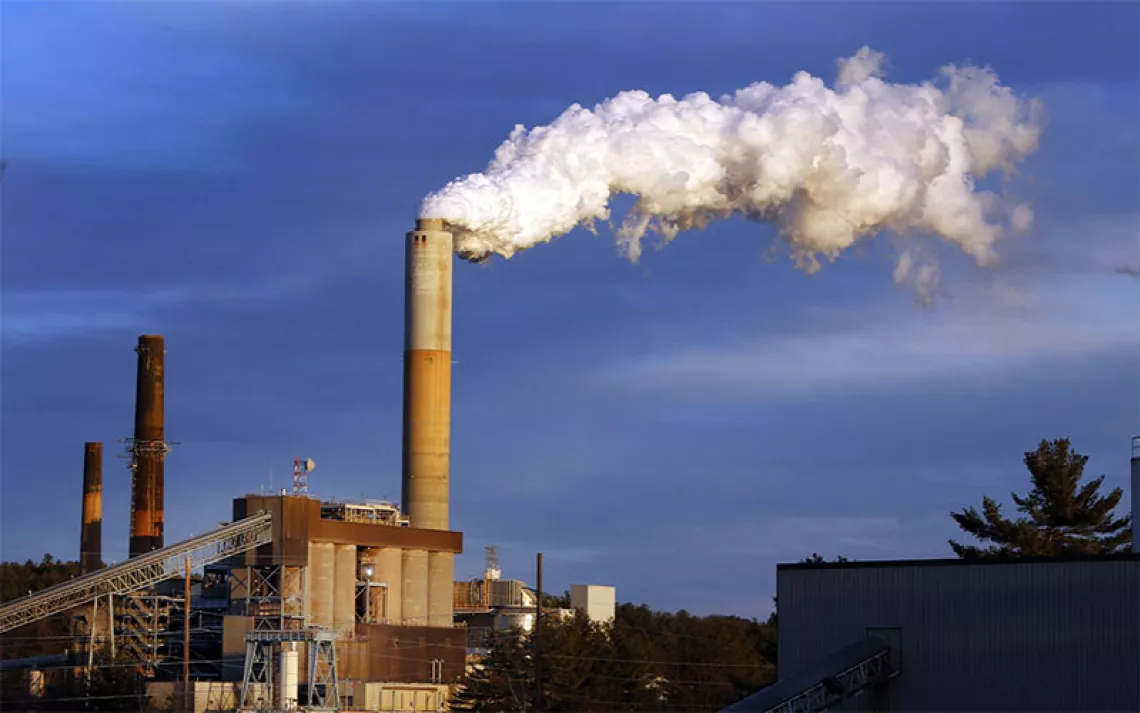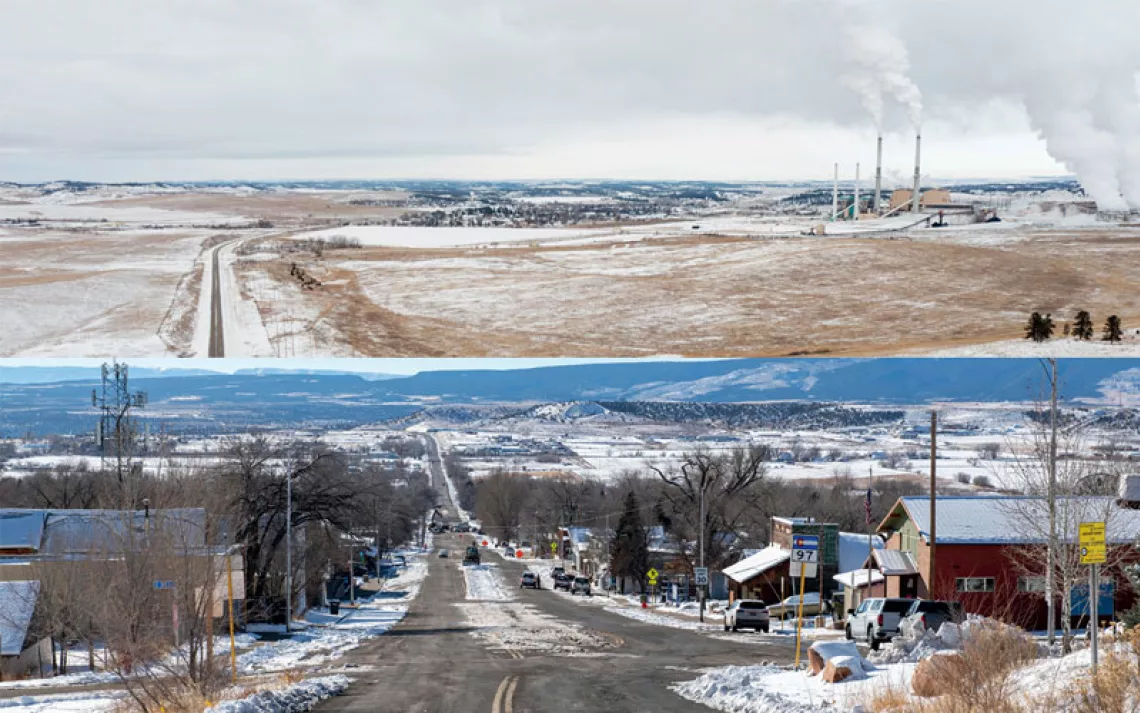Obama Administration, Big Coal Face Off over Clean Power Plan
Many of the two dozen states suing to block a plan for reducing greenhouse gas emissions are already on their way toward meeting its goals

Photo by Tonkovic/iStock
The Obama administration’s effort to reduce greenhouse gas emissions will face a crucial test this week as one of its key environmental initiatives goes to court.
Beginning today, the D.C. Circuit of the U.S. Court of Appeals will hear oral arguments on the legality of the EPA’s Clean Power Plan (CPP), the nation’s first-ever set of federal rules limiting carbon emissions from existing coal- and gas-fired power plants. Coal companies and their political allies, including some utilities, in more than two dozen states are suing to block the plan.
The CPP establishes state-by-state targets for reducing CO2 emissions by 2030 that phase in gradually over time, including a short-term 2022 checkpoint. Coal-fired power-plant emissions are one of the primary causes for climate change and have been linked to a variety of impacts on human health, especially for children and seniors.
“Climate change is the defining challenge of our era,” says Dr. Christopher Field, director of the Stanford Woods Institute for the Environment and former co-chair of Working Group II of the Intergovernmental Panel on Climate Change from 2008 to 2015. Dr. Field filed a sworn declaration in the case supporting the EPA. “We don’t yet know all the steps that will need to be taken to address the problem, but we can be really confident that thoughtful, commonsense ambitious steps now are going to pay big dividends.”
The EPA finalized the new rules in August 2015 under the authority of the Clean Air Act, which requires the agency to regulate hazardous emissions and protect public health. Before then, there were no regulations in place that limited carbon pollution from fossil-fuel-fired power plants, which account for approximately 40 percent of the CO2 produced in the United States. The CPP sets a 2030 goal for reducing total CO2 emissions from the U.S. power sector to 32 percent below 2005 levels, assuming that all the states meet their targets.
The 28 state attorneys general representing the companies suing the EPA in the case, West Virginia v. EPA, claim the federal government does not have the authority to regulate a state’s emissions under the Clean Air Act. However, a previous 5-4 Supreme Court decision in 2007, Massachusetts v. EPA, empowered the EPA to regulate greenhouse gases, including carbon dioxide and other pollutants, under the act. That case, which dealt with automobile emissions, established greenhouse gases as “air pollutants” and a threat to public health, requiring the EPA to regulate such emissions.
Meanwhile, many electric utilities such as Pacific Gas and Electric Company, Austin Energy, and Dominion Resources Inc. actually support the Clean Power Plan, or at least declined to contest it. Several filed a joint motion last November to intervene in support of the EPA.
Climate scientists and health experts say that the CPP is a first step but does not go far enough.
“The Clean Power Plan is not perfect, but there are several things that are uniquely important about it,” Dr. Field says. “One, it puts the United States squarely in the position of being among the leaders in the world who are being aggressive in tackling climate change. It uses existing technologies in a meaningful, thoughtful way. And, it provides both a level of flexibility that allows all regions of the country to participate, and a level of ambition that makes the next steps clearly doable.”
The CPP gives states a flexible framework for achieving federally mandated reductions targets, which, in part, favors a shift toward renewable energy. For example, states using less electricity due to energy-efficiency programs, and/or shifting to cleaner forms of generation such as renewables and natural gas, are allowed to count lower emissions toward meeting their targets.
“The rule isn’t strong enough in the sense that if you look at the overarching climate problem, we need to go much further than these reductions,” says Jeremy Richardson, senior energy analyst with the Union of Concerned Scientists (UCS) and lead author of “States of Progress,” an analysis released last year of how states perform under the CPP. “So we see this as a first step in the right direction.”
Opponents of the CPP claim its regulations are a heavy-handed attack on the coal industry that will result in higher energy prices for consumers. But according to UCS, 31 states are already more than halfway toward meeting the rate-based 2022 benchmark mandated by the plan, with 21 set to surpass it. Kentucky, for example—Senator Mitch McConnell’s home state—is halfway toward meeting the 2022 benchmark thanks to efforts already underway to retire older coal plants. Coal-dependent Ohio is about three-quarters of the way there. Both states are among those suing the EPA to block the CPP.
Other studies show that the Clean Power Plan would actually lower what consumers pay on their electricity bills. A Georgia Institute of Technology School of Public Policy report released last year showed that Ohio consumers, for example, could save $312 annually on electricity bills under the new rules.
Why would a state fight a plan for reducing greenhouse gas emissions when it is already on its way to meeting the goals of that plan?
“If you’re a politician or a regulator or somebody who really supports coal power, you’re not going to like this rule,” Richardson says. “Because it really does disadvantage coal compared to other sources of generation that are cleaner.”
The argument that coal is “cheaper” compared to cleaner, more renewable sources of energy is a myth, science and health experts say. The stated cost of burning coal doesn't reflect the true cost in terms of the impacts on climate and human health.
“If the exposure to the air pollution caused by burning coal was listed on the death certificate of Americans when they die, it would have easily made it into the top 10 causes of death in the United States,” says Dr. Alan H. Lockwood, emeritus professor of neurology at the University of Buffalo, a senior scientist at Physicians for Social Responsibility, and the author of the just-released Heat Advisory: Protecting Health on a Warming Planet. “The Clean Power Plan is an essential but minimal first step in what needs to be a much greater effort to curb the emission of greenhouse gases to stop climate change and the devastation that would cause.”
According to Dr. Lockwood, there doesn’t have to be prolonged exposure to particulate matter to trigger severe and adverse health effects. He lists heart disease, cancers of all types, respiratory diseases, and stroke as the four main conditions resulting from exposure to air pollution.
“For example, the risk of having a stroke or myocardial infarction, or a potentially fatal heart-rhythm disturbance, goes up during spikes in particulate-matter concentration. Burning coal to generate electricity is one of the leading sources of those small particles,” Dr. Lockwood says.
According to the World Health Organization, 7 million premature deaths result each year worldwide from air pollution. The numbers of premature mortalities in the United States from particulate emissions is almost 10,000 people per year.
The EPA has enumerated several benefits of the CPP in terms of health-care costs, including reduction in the number of strokes, asthmas attacks, and missed days at school or work.
“All of those things cost the economy,” Dr. Lockwood says. “They may not be dollars and cents you see going out of your pocket, but they are costs to society, and they are real.”
Environmental and health advocates say blocking the CPP would be a major, but not decisive, setback. They point to segments of the United States where state regulations are already taking effect and resulting in steps that limit carbon pollution.
“There is increasing evidence that transitioning to a 21st-century energy system represents more of an opportunity than a challenge,” says Dr. Field. “It’s a way to build greater reliability and create a vibrant new economy. The legacy industries are having trouble positioning themselves in a 21st-century world. That’s what always happens when we face the opportunity to embrace new technology: The purveyors of the technologies of the past have trouble figuring out how to fit into the new world.”
“We have a very clear understanding of what the global nature of the response to climate change needs to look like to avoid some of the worst risks and impacts,” says Dr. Katharine J. Mach, senior research associate at Carnegie Sciences Department of Global Ecology, who joined Dr. Field in filing a declaration in support of the EPA. “The hard thing becomes, what does that mean when you drill down to individual nations. I think the Clean Power Plan is impressive in that it’s one of the core regulatory dimensions of how we would start to take the plunge in an impressive way, exhibiting global leadership in terms of driving our emissions down substantially over a relatively short time frame. I think it’s inevitable that this will have winners and losers, and the policy landscape has to encompass those dimensions with sophistication.”
Should the states and companies suing to block the CPP succeed, Dr. Field points to another, more global consequence that extends beyond U.S. borders.
“The worldwide approach to the climate challenge is very much a dance, where every party is looking at what every other party is doing to try and adjust their commitments,” he says. “One of the really important features of the 2015 Paris agreement is that countries really tackled this question of common but differentiated responsibility, and have come to closure on the idea of what kind of commitments from different countries at different levels of economic development are fair. If the United States is perceived globally to be shirking its responsibility, it’s going to make it much more difficult for the world to get oriented toward this problem. Any lack of decisiveness in the U.S. is likely to reverberate around the world community in a way that really slows down action on this critically important issue.”
Dr. Field says there is more and more research into how a portfolio of technologies can decrease emissions, including some that remove CO2 from the atmosphere.
“On the question of whether it’s possible to drive carbon emissions to zero? We know the answer: The answer is yes,” he says. “The question is, how can we mobilize the creativity and the spirit of innovation and the desire to be a great nation to make that happen as fast as possible?”
 The Magazine of The Sierra Club
The Magazine of The Sierra Club



